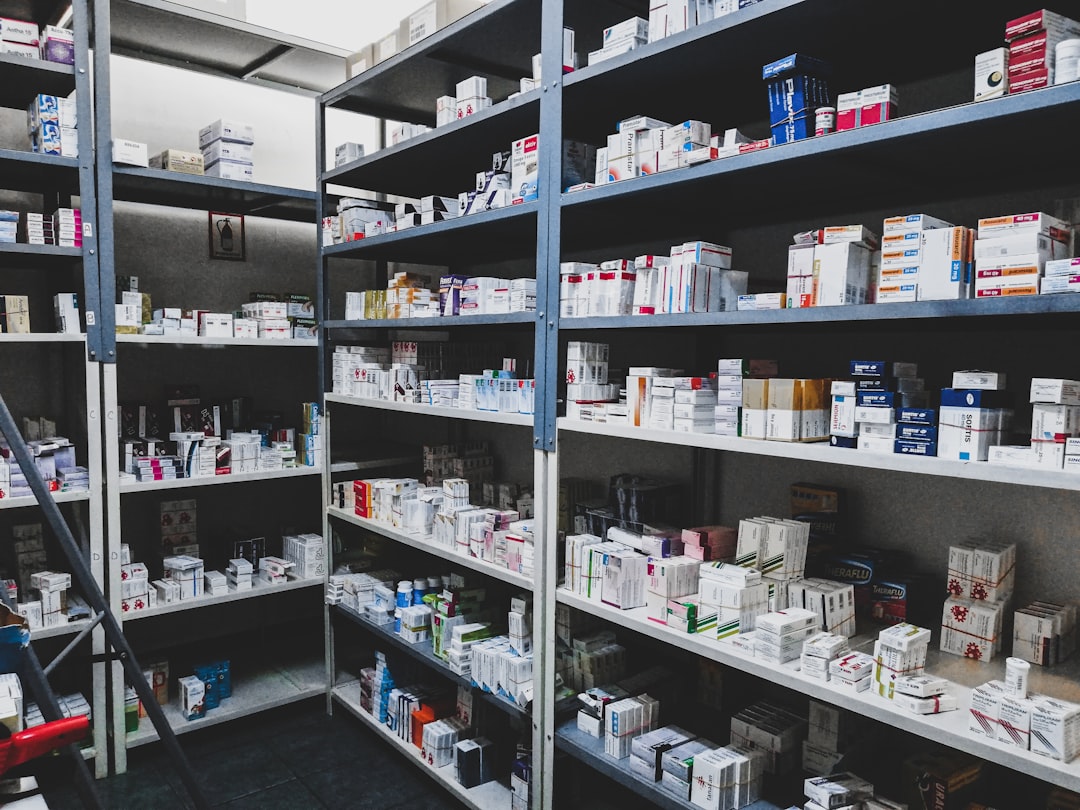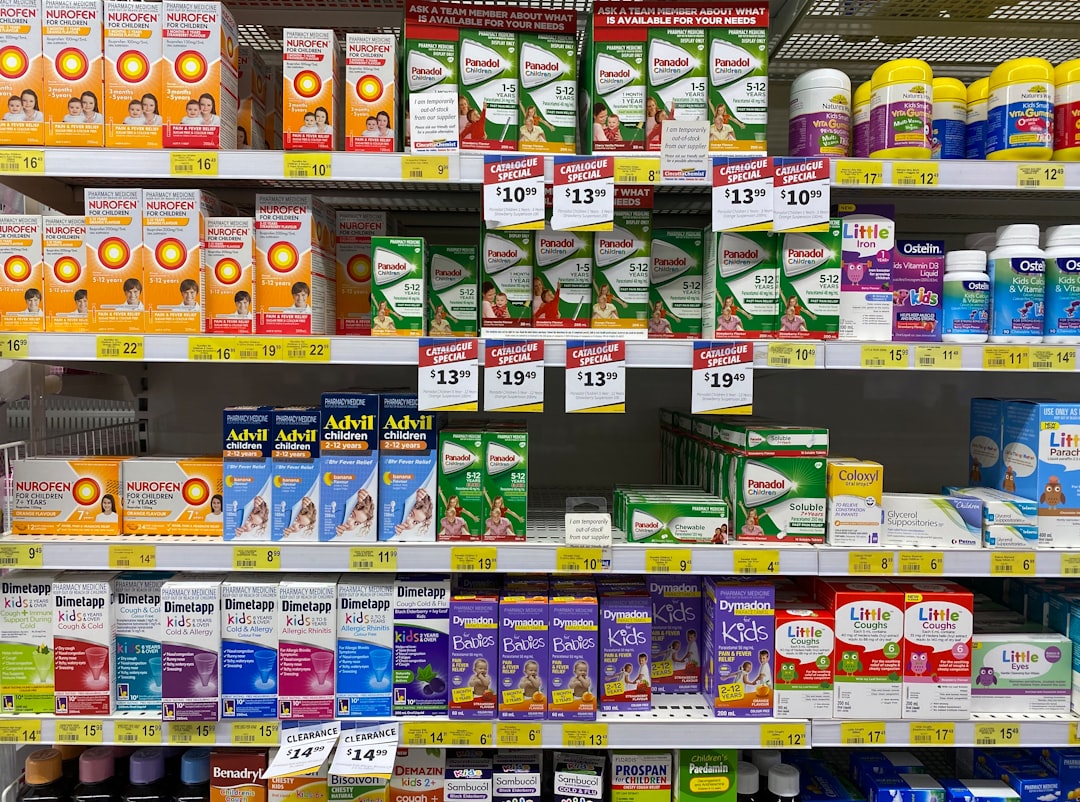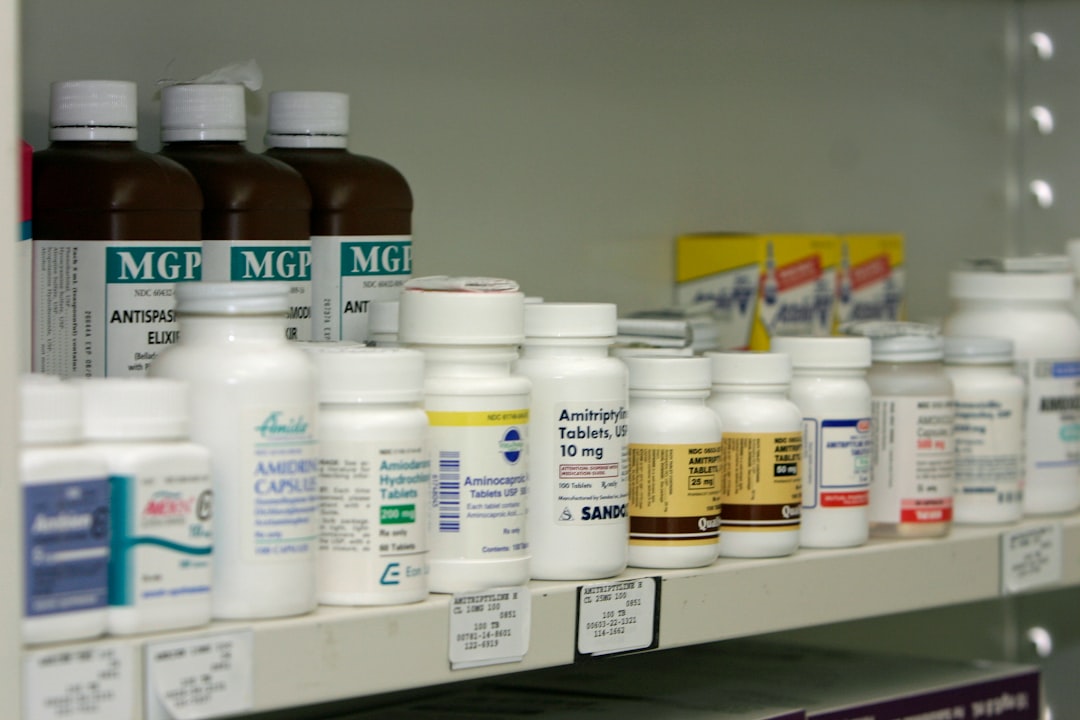

Engage prospects with a scan and streamline customer engagement with FREE QR code marketing tools by Sona – no strings attached!
Create a Free QR CodeFree consultation

No commitment

Engage prospects with a scan and streamline customer engagement with FREE QR code marketing tools by Sona – no strings attached!
Create a Free QR CodeFree consultation

No commitment
Health and medical product suppliers are under increasing pressure to modernize their customer engagement and feedback mechanisms in a rapidly shifting healthcare landscape. Traditional print brochures, paper surveys, and manual data collection not only slow down insight gathering but also introduce friction that can limit response rates and delay actionable information crucial for improvement. Perhaps more concerning, when high-value prospects or engaged users leave feedback outside these rigid processes, that insight is often missed, preventing timely follow-up and weakening competitive positioning.
Layered onto these frustrations are regulatory compliance demands, the growing need for data privacy, and the necessity to unify disjointed feedback sources across domains and CRMs. As a result, organizations can struggle with fragmented account views or even lose visibility into which stakeholders are engaging, leaving sales and service teams to pursue leads and handle issues reactively. Teams are forced to reconcile spreadsheets, email threads, and call notes to piece together a picture of account health, which slows down decision-making and can jeopardize clinical relationships.
In this environment, QR codes represent a bridge from the physical to the digital, giving health and medical product suppliers an instant, secure means to capture feedback from packaging, distribution points, trade show materials, and more. A simple scan lets healthcare professionals and end users share their thoughts, complete surveys, report issues, or access support seamlessly, removing analog barriers and enabling real-time engagement. When implemented with privacy safeguards and integrated into CRM or EHR systems, QR campaigns create a feedback engine that is fast, auditable, and tailored to clinical workflows.

Gathering timely and actionable feedback from clinicians and buyers is both critical and notoriously challenging for healthcare product distributors and suppliers. Outdated paper-based forms, print surveys, and labor-intensive follow-up calls often fail to surface feedback from decision-makers, especially when the process is complex, poorly timed, or disconnected from the CRM. The result is missed high-value prospects and lost insights that never make it back to the sales or support teams that need them.
QR codes close these gaps by placing a lightweight digital gateway at the exact moment of engagement. Whether a clinician is unboxing a device, referencing an instruction sheet in a lab, or viewing a training poster at an in-service, one scan can launch a mobile-first feedback flow that records who scanned, what they did, and what needs attention. The same approach eliminates long data lag times that once stretched from weeks to months, which is especially important for issue escalation and safety-related feedback.
Specialized QR code systems unify external feedback with internal records so teams can see lead intent or product sentiment before opportunities slip away. This reduces manual entry and protects against fragmenting data across departments or systems. Over time, you will build a reliable, always-on signal of customer health that spans delivery, onboarding, training, and ongoing use. Start creating QR codes for free.

Instead of hoping that physical forms are filled out and mailed back, or that manual call outreach reaches the right person at the right time, suppliers can modernize feedback and support using QR-driven check-in points on every product, delivery, or training event. A scan immediately launches the right flow, updates the correct account, and triggers alerts if thresholds are met.
For example, a paper warranty card becomes a mobile registration form tied to a serial number, while a brochure survey transforms into a one-tap experience with prefilled context. The analog-to-digital shift cuts administrative overhead for field reps, reduces error-prone data entry, and ensures feedback is never separated from the account or device to which it belongs. This builds a reliable digital feedback loop that strengthens customer relationships and shortens resolution times.

For suppliers in health and medical industries, the disconnect between physical product distribution and measurable digital engagement creates persistent pain points. Conventional print materials%20(1)%20(1).pdf) rarely convert visibility into actionable feedback, especially when prospects or customers remain anonymous or their data is not attributed to the appropriate account. QR codes solve this by making every offline asset a trackable, actionable touchpoint.
By moving from static information to interactive QR-based engagement, suppliers surface previously hidden customer intent and integrate real-world interactions into digital systems for responsive action. The result is a tighter feedback loop, better account visibility, and a measurable uplift in customer satisfaction and retention.
Healthcare suppliers must handle feedback with care, since it can include sensitive details about devices, usage contexts, or even patient-related information that falls under strict regulatory regimes. Strong privacy practices are essential for QR-driven programs to succeed and scale without risk.
QR-based workflows can be designed to follow privacy-by-default principles. Use encrypted landing pages, data minimization, region-aware consent prompts, and role-based access controls to prevent unauthorized viewing. A QR management platform like Sona QR provides tamper-resistant tracking, audit logs, and configurable retention policies, which makes it easier to satisfy compliance reviews and document how feedback is collected, processed, and stored. When combined with secure CRM or EHR integrations, suppliers can deliver faster support without compromising on regulatory obligations.

Suppliers face not only the challenge of capturing feedback but also of unifying it across touchpoints and departments. Choosing the right QR code formats helps standardize data capture and accelerate routing to the right place.
For health and medical product suppliers, forms and dynamic links are often the most valuable formats because they reduce compliance risk and keep content current. With Sona QR, you can generate these formats, manage destinations, apply UTM tags, and monitor performance from a single dashboard.
Understanding where engagement signals originate and who they belong to remains a perennial challenge for suppliers. Loosely tracked campaigns lose visibility into intent and readiness to buy. Strategic QR placement reveals opportunities across the entire customer journey.
When QR deployment is tied to a data strategy, these placements transform static materials into an always-on source of engagement signals that sales and service teams can act on proactively.
These use cases have consistent measurable outcomes, such as a lift in response rates, shorter time to support resolution, and clearer mapping of offline engagement to pipeline activity. Suppliers that make QR feedback part of their standard operating procedures gain a defensible speed and insight advantage.
Each scan is an intent signal that includes context, timing, and location. By deploying distinct QR codes across touchpoints, you can segment your audience automatically and trigger precise follow-ups with content that matches their needs and stage.
In health and medical product supply, specific audience distinctions often include clinical role versus procurement, current customers versus prospects, and post-install users versus evaluation users. Aligning content and sales outreach with these distinctions increases response rates and ensures valuable expertise reaches the right people at the right time.
QR codes act as connectors across offline and digital campaigns, enabling real-time engagement and richer data collection. They link physical materials with your marketing stack so every touchpoint can be tracked, optimized, and attributed to outcomes.
Centralized QR management supports consistent messaging, advanced attribution, and a holistic view of performance across channels. With Sona QR, you can coordinate codes across campaigns, monitor results in real time, and route data into your CRM and analytics tools without creating new silos.
Clarify what success looks like before you design your first code. Do you want to improve NPS for distributed products, capture faster compliance attestations, or accelerate technical support feedback? Map your objective to the moments where feedback currently falls through the cracks, such as after delivery, during installation, or following a training session.
Prioritize one or two high-impact use cases where scanning context is strong and the value to the user is clear. For example, a Scan to register device and receive quick-start training code placed on the device packaging offers immediate utility. The clearer the benefit, the higher the scan rate and the better your data quality.
Choose the QR format that aligns with your goal. Static codes are suitable for evergreen materials like a permanent manual PDF, while dynamic codes are essential for trackable, editable campaigns such as recall notices or evolving training libraries. Dynamic codes also enable robust analytics and retargeting.
In healthcare environments where regulations change and content must remain current, dynamic codes provide future flexibility and reduce reprinting costs. With Sona QR, you can start with a dynamic link, add UTM parameters, and refine destinations as your program matures, all without touching printed materials.
Make the code unmissable and scannable in clinical settings. Add a high-contrast frame, your logo, and an explicit CTA such as Scan to report your experience or Scan to request training. Ensure adequate white space around the code and select a size suitable for the viewing distance on packaging, labels, or posters.
Test the code extensively before rollout. Validate scanning across common devices, at various angles and lighting conditions, and on different substrates from glossy instruction sheets to curved reagent bottles. Perform durability checks for disinfectant exposure and repeated cleaning common in clinical environments. A short pilot with field reps or clinical educators can surface practical improvements that boost scan rates.
Roll out QR codes where they will meet the most engaged users. Start with outgoing shipments, installation guides, device housings, and in-service training materials. Add codes to booth signage and demo stations for conferences, and include them in direct mail kits for new facility onboarding.
Align placement with user behavior and the physical environment. Codes on a label near a power switch make sense for first-use instructions, while codes on a competency checklist support training workflows. Match the CTA to the moment. For example, Scan to confirm installation completion or Scan to report an issue routes signals to the right owners faster than catch-all contact forms.
Implement end-to-end tracking from scan to outcome. Use your QR management platform to capture scan time, location, device, and source, then tie these events to known contacts in your CRM or EHR where appropriate. Analyze conversion behavior, such as survey completions or support requests, and identify drop-off points in the flow.
Iterate continuously. A/B test CTAs, landing page layouts, or question order to remove friction. Use Sona QR to run controlled experiments, compare performance across placements, and automatically sync high-intent scans into sales alerts or service tickets. Regular optimization turns a one-time launch into a compounding engine for insight and revenue.
In a landscape where proving ROI and meeting regulatory standards are non-negotiable, QR-enabled campaigns help suppliers connect the dots from engagement to outcomes. It is not enough to know a code was scanned. You need to understand whether the scan led to a form submission, a support resolution, a demo request, or a purchase conversation. Without this, optimization stalls and spend cannot be justified.
With Sona QR and Sona.com, you can build a complete attribution picture. Scan events include time, device, location, and campaign source. Downstream actions are tied to contacts and accounts in your CRM. Multi-touch attribution connects QR engagement with website visits, email clicks, and event attendance, so you can quantify contribution to pipeline and revenue.
By embedding analytics into your QR feedback process, you not only safeguard against data silos but also build the operational visibility needed to prioritize resources and act before competitors do.
Momentum comes from consistent execution across assets and teams. A handful of best practices will increase scan rates, improve data quality, and extend impact from the first scan to the final outcome.
Creative deployments can extend value beyond initial delivery. For example, add a QR code to sterilization or maintenance logs that opens a date-stamped form, or place a QR on invoices that links to reordering options and an NPS mini-survey. Each unique use case becomes a measurable engagement stream that improves retention and growth.
The pace of change and intensity of feedback demands in healthcare will only accelerate. By weaving QR codes into every touchpoint, health and medical product suppliers eliminate legacy bottlenecks such as overlooked leads, delayed follow-up, weak attribution, and siloed data. The payoff is a proactive, data-driven approach that strengthens customer relationships, improves compliance readiness, and fuels sustainable growth.
For suppliers, QR codes transform every physical interaction into a digital opportunity for engagement, feedback, and value creation. With secure, dynamic QR solutions like Sona QR, you can generate and manage codes at scale, update destinations without reprints, and connect real-world engagement to CRM and revenue analytics on Sona.com. The transition away from analog feedback mitigates missing signals and slow response, while enabling a continuous feedback journey that elevates brand trust and keeps your teams one step ahead of evolving expectations.
QR codes have transformed health and medical product suppliers from static feedback collection into dynamic, actionable insights channels. Whether it’s gathering real-time customer feedback, improving product offerings, or enhancing client satisfaction, QR codes replace outdated surveys with instant, mobile-friendly interactions that capture valuable data to optimize every touchpoint.
Imagine knowing exactly which products or services resonate most with healthcare providers and patients—and being able to respond immediately to improve outcomes. With Sona QR, you can create dynamic, trackable QR codes in seconds, update feedback campaigns without reprinting materials, and connect every scan directly to actionable insights that drive smarter business decisions. No wasted effort, no missed feedback—just continuous improvement and stronger customer relationships.
Start for free with Sona QR today and turn every scan into meaningful feedback, better products, and lasting customer loyalty.
QR codes provide a secure, instant way to capture feedback from packaging, distribution points, and events, enabling real-time engagement while removing analog barriers and improving response rates.
Look for suppliers who adopt modern digital engagement tools like QR codes that integrate feedback with CRM or EHR systems, ensure regulatory compliance, and provide timely, actionable insights.
Healthcare suppliers use technologies like QR codes to digitize feedback collection, unify data across touchpoints, track engagement in real time, and trigger automated follow-ups to improve customer relationships.
Key trends include replacing analog feedback with QR code-driven digital engagement, using dynamic QR codes for flexible content updates, integrating feedback with CRM systems, and leveraging analytics for multi-touch attribution.
Top suppliers are those that modernize customer engagement using QR code technology, ensure compliance with healthcare regulations, provide seamless feedback loops, and integrate insights into CRM and analytics platforms.
QR codes enable instant mobile-first feedback at moments of engagement, reduce data lag, increase completion rates, and tie responses directly to known contacts and accounts for faster action.
Common QR code formats include web links for surveys and support, vCards for contact sharing, forms for registrations and reporting, SMS or email for issue reporting, app download links, and dynamic QR codes for content updates.
Suppliers implement privacy-by-default designs, encrypted landing pages, role-based access controls, tamper-resistant tracking, audit logs, and secure CRM or EHR integrations to meet compliance standards.
Effective placements include product packaging, shipping documents, event materials, direct mail, operating manuals, and training aids to capture feedback throughout the customer journey.
Suppliers should define use cases, select appropriate QR code types, design and test codes for clinical environments, deploy across key channels, and track and optimize performance continuously.
By deploying unique QR codes per journey stage and tagging scan actions, suppliers can segment audiences automatically, track location and timing, and sync data with CRM and ad platforms for precise follow-up.
Analytics provide detailed scan metrics, connect engagement to outcomes, enable real-time monitoring, enrich CRM records, and support multi-touch attribution to quantify campaign ROI.
Replacing analog methods with QR codes reduces manual data entry, eliminates delays, prevents lost feedback, and creates a reliable digital feedback loop that strengthens customer relationships.
Field teams should be equipped to explain the benefits of scanning, such as faster warranty confirmation, prioritized support, and access to training resources, to drive adoption.
Use cases include product experience surveys, recall and compliance notices, trade show lead capture, demo feedback, and capturing support requests or device registrations.
Use Sona QR's trackable codes to improve customer acquisition and engagement today.
Create Your FREE Trackable QR Code in SecondsJoin results-focused teams combining Sona Platform automation with advanced Google Ads strategies to scale lead generation

Connect your existing CRM

Free Account Enrichment

No setup fees
No commitment required

Free consultation

Get a custom Google Ads roadmap for your business






Launch campaigns that generate qualified leads in 30 days or less.
